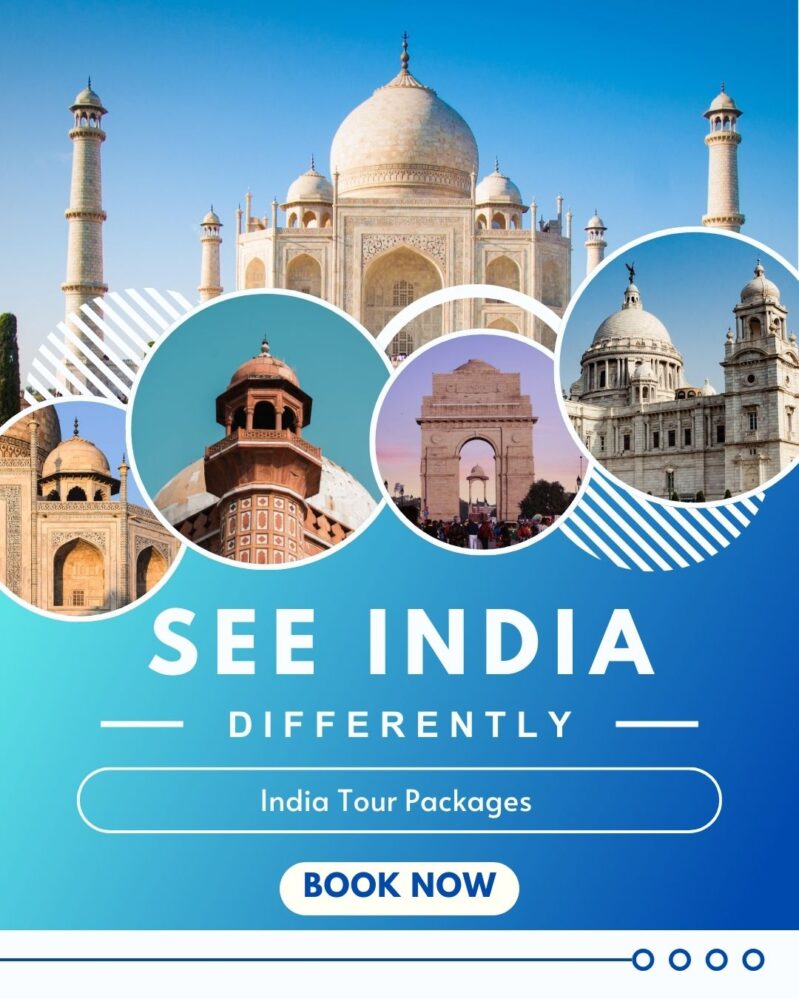
Introduction to Golden Triangle India
Golden Triangle India is one of the most iconic and culturally rich travel routes in the country. This popular circuit connects three historic cities: Delhi, Agra, and Jaipur, forming a triangle on the map of northern India. It’s not just about geography—it’s a route soaked in centuries of heritage, art, architecture, and cuisine. Whether you’re a solo traveler, a history enthusiast, or a couple on a cultural getaway, this route offers something timeless.
The journey through Golden Triangle India provides an experience of contrast—royal palaces alongside bustling street markets, centuries-old monuments surrounded by modern cafes, and traditional handicrafts coexisting with urban living. This blend makes it one of the most compelling travel experiences in India.
Why is Golden Triangle India So Popular?
Golden Triangle India owes its popularity to three reasons: accessibility, cultural depth, and architectural grandeur. The route is well-connected by road, rail, and air. The distance between the cities is reasonable, making the triangle easy to complete in a week.
Each city brings a unique identity:
- Delhi offers a clash of ancient forts, Mughal heritage, colonial remnants, and modern vibrancy.
- Agra is home to the world-famous Taj Mahal, but also holds architectural gems like Agra Fort and Mehtab Bagh.
- Jaipur is the ‘Pink City’ known for its forts, palaces, and markets that reflect Rajputana glory.
Golden Triangle India gives travelers an insight into India’s rich past and its evolving present—without overwhelming distances or rushed itineraries.
Starting Point: Delhi – A Historic Capital
Delhi is usually the first stop for those traveling through the Golden Triangle India. It’s the capital of India and one of the oldest cities in the world. From ancient mosques to British-era buildings, Delhi wears many layers of history.
Top Attractions in Delhi:
- Red Fort: A UNESCO World Heritage Site, this fort symbolizes Mughal grandeur.
- India Gate: A war memorial, ideal for a quiet evening walk.
- Humayun’s Tomb: Precursor to the Taj Mahal in architectural style.
- Qutub Minar: The tallest brick minaret in the world.
- Lotus Temple & Akshardham Temple: Modern-day architectural wonders.
- Chandni Chowk: Old Delhi’s heart, perfect for food lovers and shoppers.
Delhi’s food scene is unmatched. Try street snacks like chaat, parathas, or a classic butter chicken meal before heading to your next destination.
Second Stop: Agra – The City of the Taj
From Delhi, Agra is around 230 kilometers away and easily reachable by car or train. The Yamuna Expressway makes it a smooth three-hour journey.
Agra is synonymous with the Taj Mahal, but it’s more than just one monument. The city was a major seat of power during the Mughal era, and its architecture reflects Islamic, Persian, and Indian styles.
Top Attractions in Agra:
- Taj Mahal: A white marble mausoleum and one of the Seven Wonders of the World.
- Agra Fort: A red sandstone fort with palaces, halls, and mosques.
- Mehtab Bagh: Ideal for viewing the Taj at sunset from across the river.
- Itmad-ud-Daulah’s Tomb: Often called the ‘Baby Taj’, it’s an intricate marble structure.
- Fatehpur Sikri: A ghost town built by Emperor Akbar, located just outside Agra.
The city’s cuisine reflects Mughal influence—spicy curries, rich gravies, and the famous petha (a sweet made from ash gourd).
Third Stop: Jaipur – The Royal Heritage
The final leg of Golden Triangle India leads to Jaipur, the capital of Rajasthan. Often referred to as the Pink City due to the color of its historic buildings, Jaipur is where the desert charm meets regal architecture.
Top Attractions in Jaipur:
- Amber Fort: A massive fort overlooking Maota Lake, known for its mirror work and elephant rides.
- City Palace: A royal residence still in use, showcasing Rajasthani and Mughal styles.
- Hawa Mahal: The Palace of Winds with its unique honeycomb design.
- Jantar Mantar: An astronomical observatory and UNESCO site.
- Nahargarh Fort & Jaigarh Fort: Perfect for panoramic views of the city.
Jaipur is also a paradise for shoppers. From gemstones and blue pottery to block-printed textiles and juttis, its markets are irresistible. Try Rajasthani dishes like dal baati churma or laal maas while here.
Ideal Duration for Golden Triangle India
The best duration for Golden Triangle India is 6 to 8 days. Here’s a sample itinerary breakdown:
- Day 1-2: Delhi – Arrival and city sightseeing.
- Day 3-4: Agra – Taj Mahal and nearby attractions.
- Day 5-6: Jaipur – Forts, palaces, and market visits.
- Day 7-8: Return to Delhi or fly out from Jaipur.
This pace allows enough time to absorb each city’s charm without feeling rushed.
Best Time to Visit Golden Triangle India
Golden Triangle India can be visited year-round, but the ideal time is between October and March when the weather is pleasant. Summers (April to June) can be extremely hot, especially in Jaipur and Agra. The monsoon season (July to September) brings greenery and fewer crowds but also unpredictable weather.
If you’re interested in local culture, time your trip with major festivals:
- Delhi – Republic Day Parade (January 26)
- Agra – Taj Mahotsav (February)
- Jaipur – Jaipur Literature Festival (January) and Teej Festival (July/August)
Travel Tips for Golden Triangle India
- Transportation: Use private cabs, tourist buses, or trains like the Gatimaan Express for faster travel.
- Stay Options: All three cities offer everything from luxury hotels to homestays.
- Guides: Hiring a government-approved guide can elevate your experience.
- Local SIM card: Internet access is helpful for navigation and bookings.
- Respect Local Culture: Modest clothing, removing shoes at religious sites, and asking before clicking photos is appreciated.
Extending Your Golden Triangle India Journey
Golden Triangle India is a complete experience in itself, but it can be extended if you have time:
- Ranthambore: A tiger reserve located near Jaipur—great for wildlife lovers.
- Varanasi: For a spiritual dip into India’s holiest city.
- Udaipur: A romantic city of lakes, just a short flight from Jaipur.
- Rishikesh and Haridwar: Ideal for yoga and spiritual seekers, accessible from Delhi.
These extensions add different shades—wildlife, spirituality, romance, and serenity—to your Golden Triangle journey.
What Makes Golden Triangle India Unique?
While India has countless destinations, Golden Triangle India stands apart for one main reason—it gives a snapshot of India’s past, present, and vibrant soul in one compact trip.
- Architectural Timeline: From 12th-century minarets to 17th-century mausoleums and 18th-century palaces.
- Cultural Mosaic: Mughals, Rajputs, and modern India coexist on this trail.
- Accessible for All: Whether you’re on a luxury vacation or a budget trip, it accommodates every traveler.
It’s a journey where every monument tells a story, every alley has a scent of history, and every city contributes to India’s identity.
Final Thoughts
Golden Triangle India isn’t just a tourist route—it’s a story of three cities that shaped the narrative of India. Each stop on this journey offers a layered experience that remains etched in memory long after the trip ends.
From the political heart of Delhi to the romantic aura of Agra and the regal beauty of Jaipur, Golden Triangle India is more than a triangle—it’s the starting point for understanding the soul of the nation.
If you’re planning your first journey into India, this triangle will guide you into its heart—culture-rich, history-deep, and endlessly fascinating.







